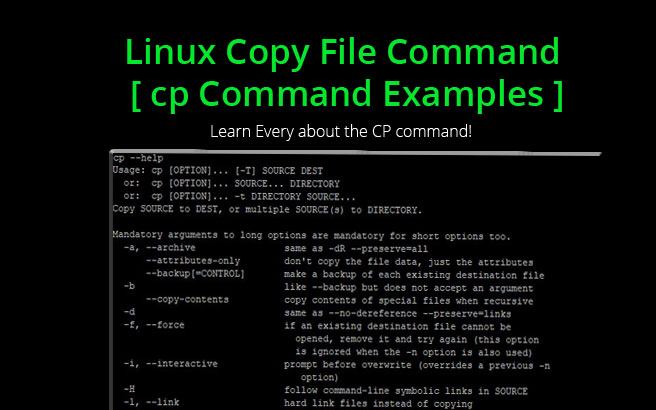
Copying directories is a vital task in Linux systems administration and everyday use. Whether you’re backing up important files, organizing your data, or setting up new environments, knowing how to efficiently copy directories in Linux is crucial. This article will guide you through the process of using the powerful ‘cp’ command to copy directories, along with its various options and best practices.
Understanding the CP Command The ‘cp’ command in Linux is a versatile tool used for copying files and directories. It’s essential to understand its basic functionality before diving into its more complex operations.
Basic Syntax for Copying Directories
To copy a directory in Linux, use the following syntax:
The ‘-R’ (or ‘-r’) option is crucial as it tells ‘cp’ to copy directories recursively, including all subdirectories and files.
This command copies the ‘documents’ directory and all its contents to the ‘/backup/’ location.
Useful CP Options for Directory Copying
- -v (verbose): Displays detailed output of the copying process.
cp -Rv /source /destination - -i (interactive): Prompts before overwriting existing files.
cp -Ri /source /destination - -u (update): Copies only when the source file is newer than the destination file or when the destination file is missing.
cp -Ru /source /destination - -p (preserve): Maintains original file attributes like timestamps and permissions.
cp -Rp /source /destination
Copying Multiple Directories
You can also copy multiple directories in a single command
This command copies dir1, dir2, and dir3 to the destination directory.
Preserving File Attributes To ensure that copied files retain their original attributes:
The ‘-a’ option is equivalent to ‘-dR –preserve=all’, which preserves all file attributes, including ownership and timestamps.
Handling Symbolic Links
When copying directories with symbolic links
- To follow symbolic links and copy the files they point to:
cp -RL /source /destination - To copy symbolic links as is:
cp -Rd /source /destination
Copying Large Directories
For large directories, consider using ‘rsync’ instead of ‘cp’:
This command is more efficient for large data transfers and provides a progress indicator.
Common Errors and Troubleshooting
- “Permission denied”: When you get this error the first thing you should check the permissions of the directory. It is important to ensure you have the necessary permissions. Use ‘sudo’ if required.
- “No space left on device”: This means your disk space is limited. You can check available disk space using ‘df -h’ command. Delete any unwanted files then you can copy the directory.
- “File exists”: This error occurs if there is another file you are copying in the directory. Use the ‘-i’ option to prompt before overwriting or ‘-n’ to prevent overwriting.
Best Practices for Directory Copying
- Always double-check your source and destination paths.
- Use the verbose option (-v) for important copy operations to monitor progress.
- Consider using ‘rsync’ for large directories or when resuming interrupted copies.
- Regularly verify the integrity of copied data, especially for backups.
Why Does This Matter?
Mastering the Linux copy directory command is essential for efficient file management and system administration. It allows you to:
- Create backups quickly and accurately
- Organize your file system effectively
- Set up new environments or user accounts easily
- Migrate data between systems securely
By understanding the nuances of the ‘cp’ command and its various options, you can perform complex file operations with confidence, saving time and preventing data loss.
In summation, there is no doubt that the Linux ‘cp’ command is a powerful tool for copying directories, offering flexibility and efficiency in file management. By mastering its various options and understanding best practices, you can handle a wide range of file copying scenarios, from simple backups to complex system migrations. Note that it is important to verify your commands before execution, especially when dealing with important data.
Similar Articles
How to Copy a Directory in Linux – Use the cp Command
How To Copy Directory on Linux
More Articles from Unixmen




